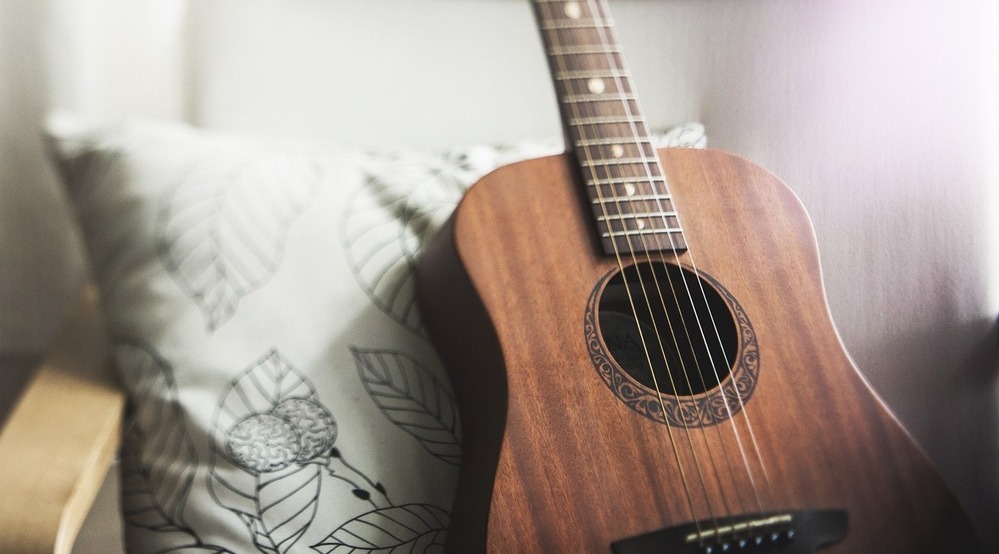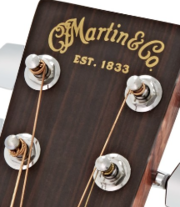Martin Guitars are among the most respected and sought-after acoustic guitars in the world, prized for their craftsmanship, tone, and heritage. However, due to their popularity, counterfeit Martin guitars are common, and distinguishing a real Martin from a fake one is crucial for anyone looking to purchase a Martin instrument. Below, we’ll explore various methods and tips to identify an authentic Martin guitar.

1. Look for the Martin Logo
a. Headstock Logo
- Authentic Martin guitars feature a precise and cleanly applied logo on the headstock.
- The logo may be:
- Stamped into the wood on older models.
- Inlaid with mother-of-pearl on many high-end and modern models.
- Printed on some budget-friendly models like the X Series.
- Counterfeit guitars often have logos that are misaligned, blurry, or poorly executed. Compare the logo with images from Martin’s official website for accuracy.
2. Check the Serial Number
Every Martin guitar has a unique serial number stamped inside the soundhole on the neck block. To verify the authenticity:
- Locate the Serial Number:
- Look inside the soundhole toward the base of the neck (near the top of the guitar body).
- Verify the Number:
- Visit Martin’s official website or contact Martin’s customer service to verify the serial number.
- Serial numbers can also indicate the year of manufacture. Cross-check the number with Martin’s serial number chart.
If the serial number is missing, smudged, or doesn’t match Martin’s records, the guitar is likely fake.
3. Inspect the Interior Label
- Most Martin guitars have an interior paper label located just inside the soundhole.
- The label should include:
- The C.F. Martin & Co. logo.
- The model number and serial number.
- The words Made in Nazareth, Pennsylvania (for U.S.-made guitars).
- Fake guitars may have labels with misspellings, incorrect fonts, or poor print quality. Compare the label with authentic Martin examples.
4. Examine the Build Quality
Martin guitars are renowned for their meticulous craftsmanship. Counterfeit guitars often have noticeable flaws in construction. Pay attention to:
- Neck Joint: Authentic Martins have precise dovetail or mortise-and-tenon neck joints. Counterfeit models may have poorly aligned or glued joints.
- Finish: The finish on a real Martin will be smooth and even. Fakes often have sloppy or uneven finishes.
- Fretboard and Bridge: Martin uses high-quality materials like ebony or rosewood for the fretboard and bridge. If the materials look cheap or plastic-like, it’s likely a fake.
5. Evaluate the Tonewoods
Martin guitars use high-quality tonewoods such as Sitka spruce, mahogany, rosewood, or koa. Many counterfeits use plywood or inferior woods to cut costs. Here’s how to tell the difference:
- Weight: Authentic Martins feel solid but not overly heavy, as they use premium woods.
- Grain Patterns: Real tonewoods will have natural and consistent grain patterns, while fakes might have unnatural, painted, or overly uniform patterns.
6. Test the Sound
One of the hallmarks of a genuine Martin guitar is its rich and balanced tone. To evaluate:
- Play the Guitar: Authentic Martins have a full, resonant sound with strong projection.
- Compare to a Known Martin: If possible, compare the sound with a known authentic Martin model.
- Counterfeit guitars often sound dull or lack the tonal depth Martin guitars are famous for.
7. Check the Price
- If the price seems too good to be true, it probably is.
- Authentic Martin guitars are premium instruments, even at the entry level. For example:
- Martin’s X Series guitars typically start at $500–$800.
- Mid-range models like the 15 Series or 16 Series range from $1,200 to $2,000.
- High-end models, such as the D-28 or OM-42, cost $2,000–$5,000 or more.
- A guitar advertised as a Martin for a few hundred dollars (outside of used sales from reputable sellers) should raise suspicion.
8. Buy from Reputable Sellers
- Authorized Martin Dealers: Purchase your guitar from an authorized Martin dealer. These dealers are listed on Martin’s official website.
- Trusted Online Retailers: Sites like Sweetwater, Guitar Center, and Musician’s Friend sell authentic Martins.
- Avoid unknown online marketplaces or sketchy individual sellers unless you can verify the guitar’s authenticity.
9. Inspect Unique Martin Features
Martin guitars have specific design elements that are hard to replicate. Check for:
- Scalloped Bracing: Found in many models, Martin’s bracing is designed for superior resonance. Counterfeits may have poorly placed or non-existent bracing.
- Ebony or Rosewood Fingerboards: High-end Martins use genuine ebony or rosewood, which counterfeit guitars may substitute with cheaper materials.
- Tortoise Pickguards: Many Martins use tortoise-style pickguards. Ensure they are properly installed and have a natural appearance.
10. Consult an Expert
- If you’re unsure about the authenticity of a Martin guitar, take it to a professional luthier or a trusted guitar shop for an evaluation.
- Experts can quickly identify discrepancies in build, materials, and serial numbers.
Conclusion
Martin guitars are iconic instruments with a reputation for quality and tone. Knowing how to spot a fake is essential to ensure you’re investing in a genuine Martin guitar. Always verify the serial number, inspect the build quality, and buy from reputable sellers to avoid counterfeits. With these tips in mind, you can confidently purchase an authentic Martin guitar and enjoy its legendary sound for years to come.

